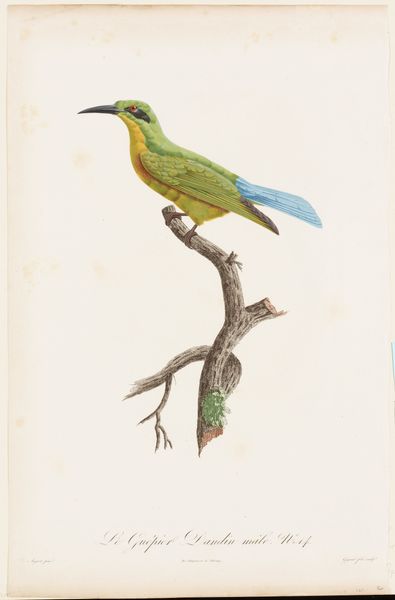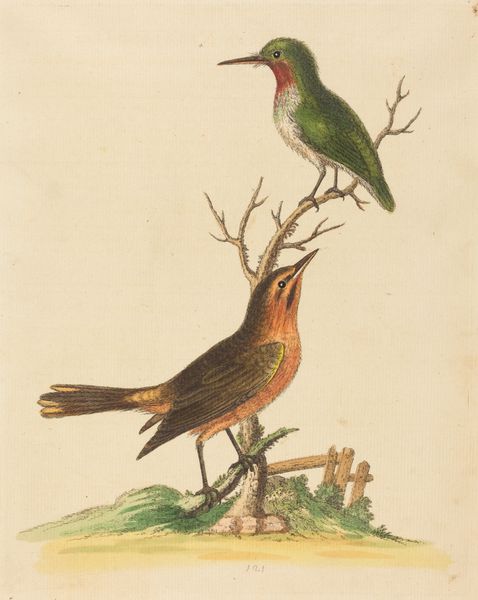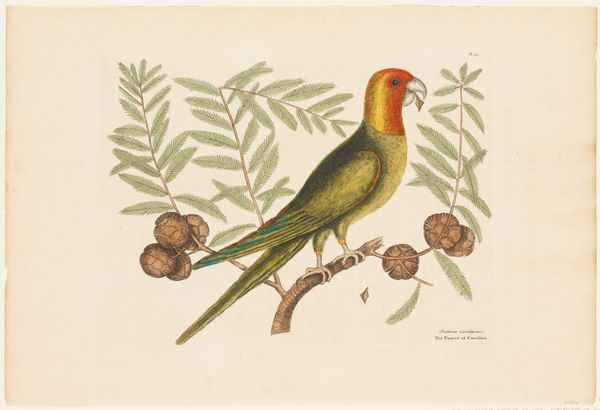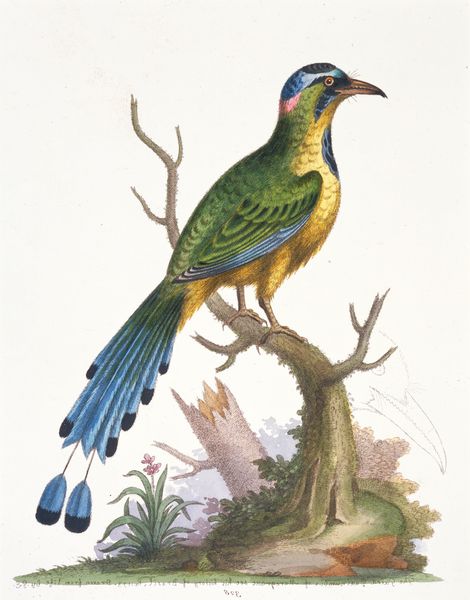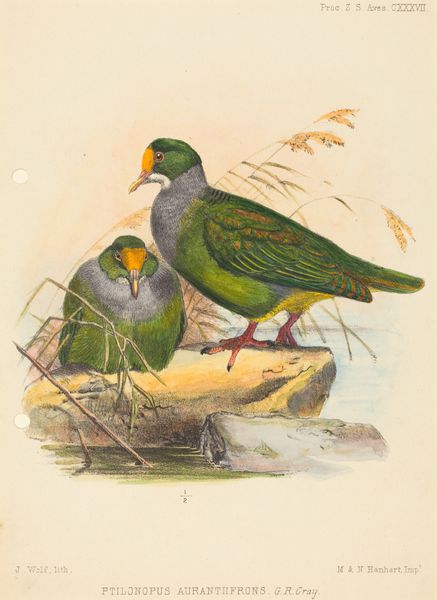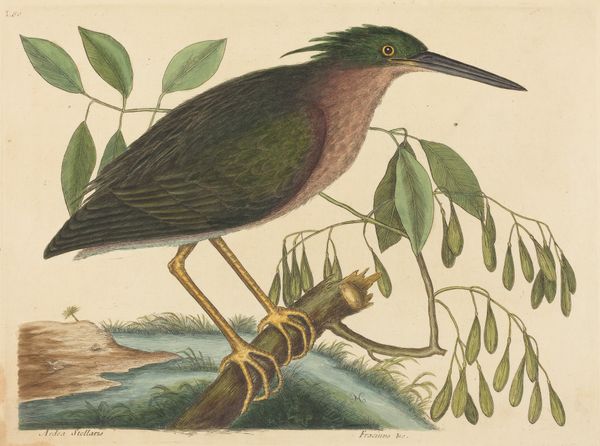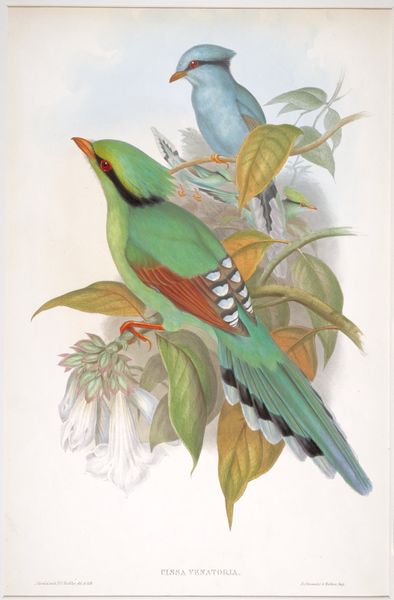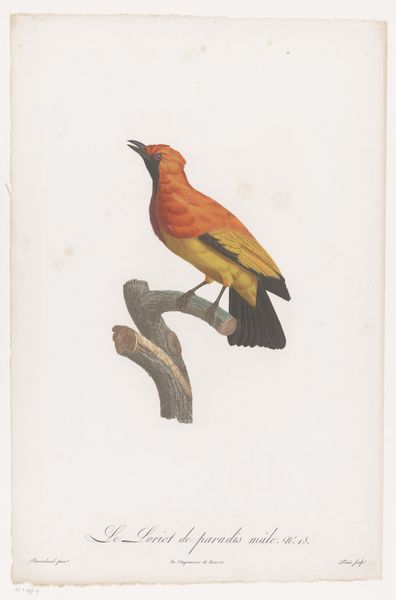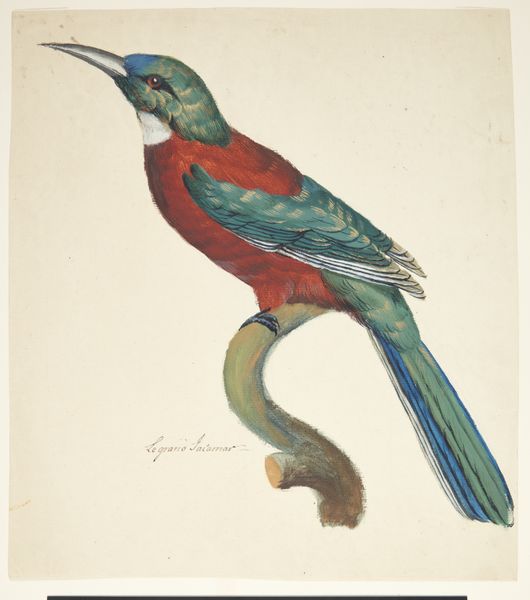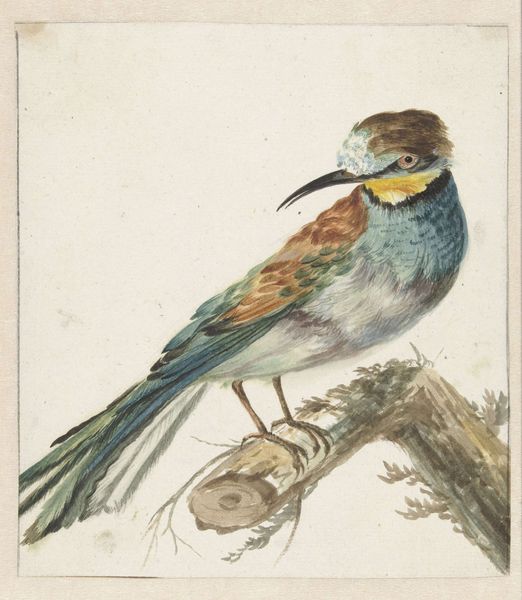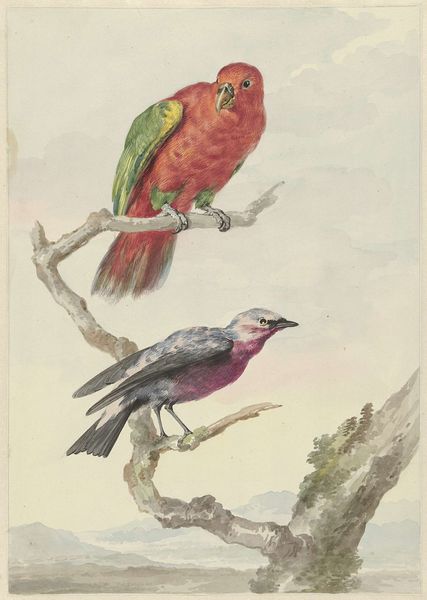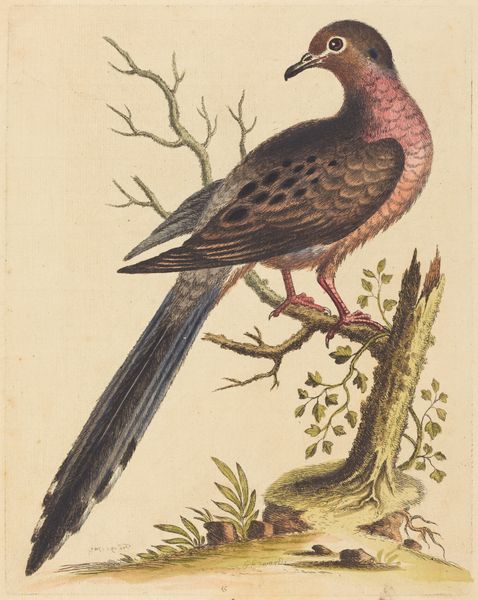
drawing, painting, watercolor
#
pencil drawn
#
drawing
#
painting
#
caricature
#
figuration
#
watercolor
#
pencil drawing
#
academic-art
#
watercolor
Dimensions: overall: 50.2 x 39.8 cm (19 3/4 x 15 11/16 in.) Original IAD Object: 13" high; 5 1/2" wide; 6 1/2" deep
Copyright: National Gallery of Art: CC0 1.0
Curator: What a delicate piece. This is "Robin (German?)" created circa 1939, crafted with watercolor and pencil. Its quiet realism is immediately captivating. Editor: It's striking, certainly. The pose seems so studied, almost melancholic, doesn't it? And the period immediately places it within the shadow of global conflict. One wonders about the bird’s symbolic weight during those times. Curator: Symbolism is important, yes, but consider the artist's technique! Look at the rendering of the feathers—the layered watercolor creating such texture and dimension. The artist meticulously detailed the bird, even the small perch on what looks to be tree fungus. Such precision requires immense skill and material understanding. Editor: And what does that meticulous labor signify? This hyper-realistic depiction speaks, perhaps, to the scientific impulse to categorize and contain the natural world. Was it produced with conservation in mind, given that many species began experiencing significant population reduction around this time? It could suggest that, while Europe moved toward an increasingly violent political climate, individual natural life and its preservation grew urgent for certain communities. Curator: I agree with your observations, especially considering the date. I'm drawn to the possibility that the artist utilized easily accessible materials and sought refuge from worldly disruption by delving into the intimate making of this delicate portrayal. The paper, the pigments, the very act of creation – it becomes an intimate gesture, insulated from the rising storms. Editor: Yes! The apparent isolation could then be considered in terms of broader socio-political marginalization and how that artist could have found power by studying subjects in the periphery like this bird. It encourages us to think critically about how notions of home and displacement affected daily existence for individuals then. Curator: Ultimately, the enduring appeal is, I think, found in the careful process that results in such quiet beauty. It asks us to examine our relationship with nature and acknowledge the labour that produced that invitation. Editor: Absolutely. This simple study prompts much wider contemplation on humanity's impact during fraught times, especially when nature feels imperiled within broader conflict.
Comments
No comments
Be the first to comment and join the conversation on the ultimate creative platform.

